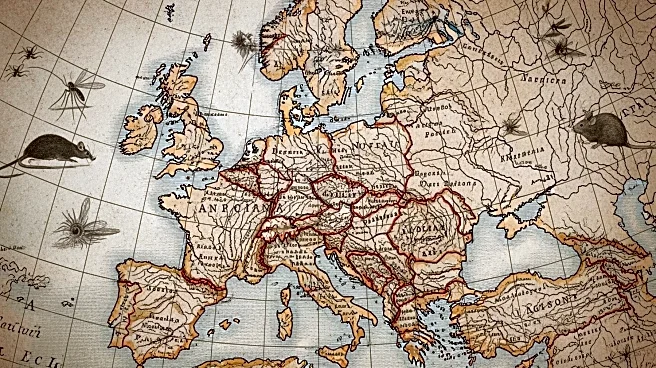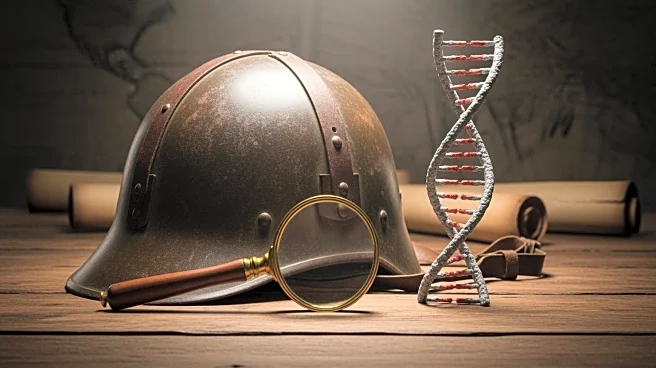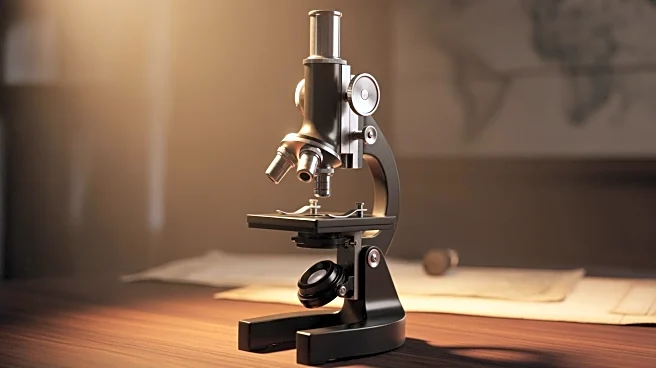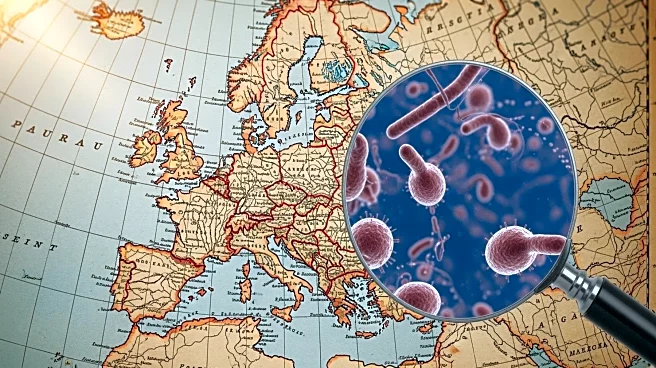What's Happening?
A recent study has uncovered new insights into the diseases that contributed to the downfall of Napoleon Bonaparte's army during its retreat from Moscow in 1812. Researchers analyzed bacterial DNA from the teeth
of 13 soldiers, revealing the presence of paratyphoid fever and relapsing fever, in addition to the previously known typhus. These diseases, transmitted through contaminated food and lice, exacerbated the harsh conditions faced by the troops, including extreme cold, starvation, and exhaustion. The study, published in Current Biology, highlights the role of microbial infections in shaping historical events and offers a deeper understanding of the challenges faced by Napoleon's army.
Why It's Important?
The study provides a more comprehensive view of the factors that led to one of the most disastrous military campaigns in history. By identifying additional diseases that afflicted Napoleon's troops, the research challenges the traditional narrative that typhus was the sole cause of their demise. This new understanding of the health challenges faced by the army offers insights into the broader impact of infectious diseases on historical events and military outcomes. The findings underscore the importance of considering multiple factors in historical analyses and highlight the potential for modern scientific techniques to enhance our understanding of the past.
Beyond the Headlines
The study's use of modern gene-sequencing methods to analyze ancient DNA demonstrates the potential for scientific advancements to reshape historical narratives. By uncovering previously unknown diseases that affected Napoleon's army, the research illustrates the complex interplay between health, environment, and military strategy. The findings may prompt historians to reevaluate other historical events where disease played a significant role, offering new perspectives on the impact of health on human history. Additionally, the study highlights the importance of interdisciplinary approaches in historical research, combining scientific techniques with traditional historical analysis to uncover new insights.











